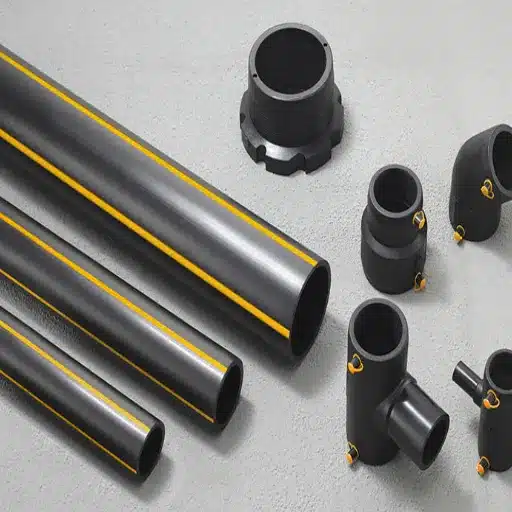Understanding the nuances in pipe materials will help with selecting the proper piping system for residential, commercial, or industrial applications. Polyethylene (PE) plastic pipe has become very popular due to its unique characteristics, but how does it stand against PVC, copper, or steel systems? This article will go deeper into the characteristics, pros, and cons of PE plastic pipe and highlight the key differences between this piping from its traditional counterparts. This will help contractors, engineers, or any kind of decision-maker within the industry to pick the right piping project with full knowledge.
Material Properties Comparison
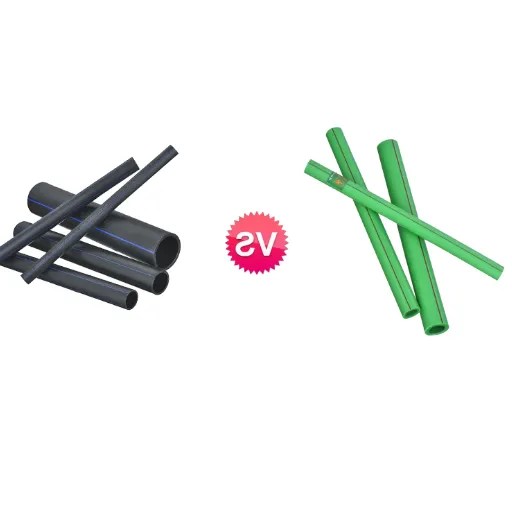
Understanding Polyethylene and Its Variants
Polyethylene (PE) is a thermoplastic polymer extensively used in piping applications due to its strength, flexibility, and corrosion resistance. The polymer is available in various types, each differing in density, molecular structure, and performance characteristics. The major types are high-density polyethylene (HDPE), medium-density polyethylene (MDPE), and low-density polyethylene (LDPE); HDPE is the choice for almost all modern piping systems. HDPE molecules give high tensile strength, excellent chemical resistance, and the ability to withstand very high pressure, thereby making it a choice for demanding applications.
HDPE pipes tend to be rated highly for their resistance against outside environmental factors, such as UV radiation and temperature fluctuations. Unlike traditional materials like steel and copper, HDPE is very lightweight and, therefore, easy to install on-site due to its flexibility. This material also enjoys a very long life, usually upwards of 50 years, under the right operating conditions. Moreover, HDPE has objections against scale and sediment formation to such an extent that it inhibits uninterrupted flow from the pipeline, which is very important from the sanitation and potable water perspective.
All of these structures-with LLDPE included-share similarities with HDPE and are chosen for differing end-use requirements. MDPE finds particular use in gas distribution systems because of its higher impact resistance and flexibility; conversely, LDPE is hardly ever used in high-pressure systems but can be used in low-pressure systems in which flexibility and lower material cost are of concern. So, from application to application, pressure, environmental considerations, and system needs may differ, which essentially means assessing that specific property of polyethylene, perhaps, is the first step before making any commitment.
Comparison of HDPE and PVC Pipes
HDPE pipes are flexible, durable, and chemically resistant, whereas PVC pipes are rigid, inexpensive, and easy to fit in.
| Aspect | HDPE | PVC |
|---|---|---|
| Flexibility | Bendable | Stiff |
| Strength | Robust | Adequate |
| Chemical Tolerance | Resistant | Moderate |
| Temperature | Cold-proof | Heat-proof |
| Pressure | High-capacity | Mid-capacity |
| Expense | Higher initial | Budget-friendly |
| Setup | Specialized | Simple |
| Lifespan | Extended | Long-lasting |
| Sustainability | Eco-friendly | Energy-heavy |
Durability and Resistance Factors
In terms of durability and resistance, HDPE and PVC here prove to be possible materials; however, their performance differs under certain scenarios. HDPE is essentially sturdy and flexible, and resistant to wear due to physical stress and the environment. It can withstand any nasty gases or harmful chemicals; in fact, it will not degrade when exposed to corrosive substances-the best choice for very harsh chemicals or materials, water systems, or changing environmental pressures.
PVC, on its side, has a nice balance of sturdiness against stiff drops in flexibility, and because it stands little ground in flexibility-oriented requirements. PVC is known to be the best heat-resistant polymer, being better than HDPE at high temperatures. This, along with its cheap price and easy installation, proves to be a value-for-money option, stain-free, and so on, for less stressful applications such as residential piping or electrical conduits, where the utmost durability is not the main concern.
The decision between an HDPE and a PVC should, therefore, be preceded by an assessment of operational need. HDPEs find their best use in long-term, very heavy-duty, or chemically demanding applications due to their extended lifespan and resistance. On the other hand, projects with tight budget considerations or low-stress demand are best catered to by PVCs, thanks to their economy and simplicity. Judging these materials in the light of the environment and their intended use will bring about an optimally performing product in a cost-effective manner.
Cost Analysis of Pipe Systems
Initial Costs of PE vs. Other Pipes
PE pipes are costlier upfront than PVC systems but are far more cost-effective in the long run, in certain applications.
| Aspect | PE Pipes | PVC Pipes |
|---|---|---|
| Material Cost | Higher | Lower |
| Install Cost | Specialized | Simple |
| Maintenance | Low | Moderate |
| Durability | Long-term | Decades |
| Flexibility | High | Low |
| Eco Impact | Recyclable | Energy-heavy |
Long-term Cost Efficiency
PE pipes show maximum performance when it comes to total lifecycle costing systems requiring durability, flexibility, and maintenance. There is a fairly considerable price difference in purchasing PE pipes, but the whole price is saved in either the halfway or long life span of the service. PE pipes are greatly resistant to cracking, fatigue, and environmental stresses, thus requiring almost no maintenance. Conversely, PVC systems might have to be repaired and replacements made ahead of time, thus creating operational disturbances.
For instance, this indicates an average operational life of over 100 years under favorable working conditions for PE pipes, thereby making the replacement cycle considerably more infrequent. In addition, low maintenance requirements constitute a direct saving on labor and material costs over time. Research institute reports also argue that the flexibility of PE works toward it being used in denoseless installation, rather than rigid types such as PVC, as this reduces excavation costs and impact on the infrastructure.
To sum up, PE piping systems offer quantifiable benefits under circumstances where long-term reliability and operational efficiency are at the core of the decision-making process.
Maintenance and Replacement Costs
Due to the inherent properties of PE, maintenance and replacement costs for polyethylene piping systems turn out to be much lower compared to other materials. Polyethylene pipes are corrosion-proof, scale-proof, and chemically degraded-proof, tending to bypass maintenance issues common for systems using metal or rigid plastic pipes. Also, since PE is flexible, stress-induced fractures and joint failures are quite uncommon, while they are usually points of concern in traditional piping systems.
Longevity, usually more than 50 years under normal conditions, idealizes life cycle cost advantages for PE pipes, as per studies. For example, routine maintenance, such as periodic inspection and basic cleaning, is all that PE systems require; whereas metal pipeline maintenance requires major interventions to control rust and abrasion. Similarly, replacement costs are minimized because PE pipes are least affected by environmental stress cracking and can resist ground movement and cracking, so fewer system upgrades are required due to this cause.
Additional joining techniques, such as electrofusion and butt fusion, can provide seamless and leak-proof joints, greatly reducing water losses and subsequent repair costs. Industry data reveal that water utilities running PE pipes dramatically reduce their annual repair bills, while some case studies show savings of up to 30% when shifting to PE systems. On the whole, its cost efficiency and reliability in contemporary infrastructure projects are further underscored by the fact that it is highly durable, easily maintainable, and seldom replaced.
Environmental Impact of Pipe Materials
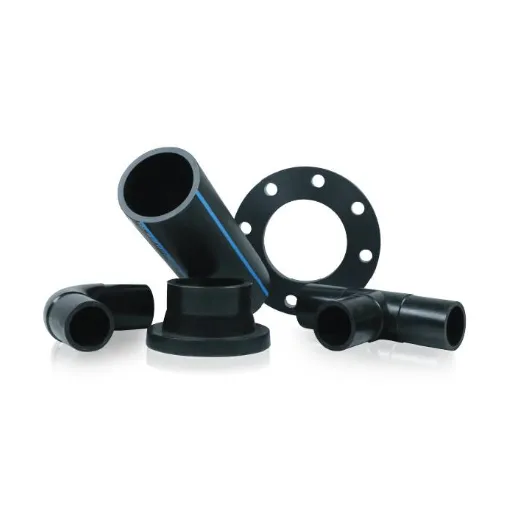
Recyclability of PE and PVC Pipes
These materials are considered as most recyclable in modern piping systems as an entry in the contemporary circular economy framework being promoted globally. PE pipes specifically are thermoplastic materials that can be reprocessed several times through melting and reconditioning very few times with negligible degradation in properties. Such qualities allow for efficient recycling, thereby lessening the amount of landfill and consequently the environmental impacts of the infrastructural project. Some industry reports state recycled PE may actually be able to replace upward of 80% of the virgin material in certain applications, thereby preserving resources and aiding material circularity.
PVC pipes, in the same way, maximize recycling because they are thermoplastic, but the processes in recycling are more complex than those in PE. Recently, innovations in PVC mechanical recycling have permitted practical recovery of both its rigid and flexible forms. Research has further indicated that recycled PVC bears approximately equal durability and functional aspects to the virgin one, which is vital for infrastructure standards. Furthermore, life-cycle assessments have shown that using recycled PVC reduces carbon emissions by as much as 40% compared with new.
An array of dedicated industry initiatives seeks to further support the recycling of PE and PVC. Collection and sorting programs for end-of-life pipes are one method of preservation with the intent to prevent used materials from ending up in landfills, but rather be reintegrated into manufacturing cycles. These initiatives prolong the lifecycle of resources and thereby reduce the global environmental impact of piping systems to a large extent.
Carbon Footprint of Pipe Production
When it comes to the production of pipes, a series of steps takes place, each of which increases the carbon footprint to some extent. Raw material extraction and processing are among the key elements affecting carbon emissions. Other significant factors are energy consumption for the production process and the amount of fuel required for the shipment of finished goods. Generally, PE pipes tend to emit less carbon during manufacture because of the simpler production process compared to steel or concrete.
Lifecycle assessments demonstrate that PVC pipe production is relatively carbon-efficient, with technological advances having improved energy use and emissions. Recycling further reduces environmental impacts by lessening dependence on virgin materials and, therefore, energy use. According to recent industry data, 30%-50% less greenhouse gases are produced in making pipes from recycled content compared to those made from 100% virgin materials.
Some efforts undertaken to reduce the carbon footprint of pipe production include using renewable energy sources, improving manufacturing processes, and optimizing material handling. Today, these approaches have become central for industries that are concerned with sustainability and are in line with advanced carbon reduction objectives. With consistent innovation, the environmental performance of the piping industry is bound to improve by a significant margin in the near future.
Impact on Water Supply and Drainage Systems
The development of sustainable practices in the piping industry has important implications for water supply and drainage systems. Integration of improved technologies and materials allows them to become more efficient in operations and hence, cheaper to run, as well as being the intrusion on their environment at a perhaps minimal level. Below are five enhancement points in detail:
- Water Leakage Reduction: Deployment of advanced technology in materials, water supply networks can substantially curtail leakage. The studies show that with high-end materials like HDPE, the leakage gets reduced by about 30% when compared with traditional piping systems, leading to great conservation of water.
- Stronger Corrosion Resistance: Modern coke-piping materials, such as stainless steel and corrosion-resistant plastic, grant drainage systems a longer service expectancy. The corrosion resistance also keeps maintenance costs lower and stops the potential of contamination in potable water supplies.
- Energy Efficiency in Water Transportation: Advanced manufacturing processes used for pipe infrastructure result in smoother inner surfaces, leading to a decrease in the frictional forces. Consequently, energy consumption for pumping water gets reduced. Upgraded designs of pipes, for instance, can reduce the energy consumption of pumping stations by roughly 20%.
- Integration of Smart Monitoring Technology: The use of smart sensors in water supply and drainage systems can provide real-time information on flow rates, pressure, and faults in the system. These systems can prevent downtime by up to 40%, in turn keeping worsening disruptions at bay and optimizing resource management.
- Reduction of Material Waste: Sustainable production practices that involve recycling and the use of environmentally friendly raw materials allow the manufacture of pipes with a much-reduced environmental footprint. Some manufacturers have actually stated their material-waste reduction by 25 percent, which, in turn, is promoting a greener supply chain.
The mentioned advancements truly highlight how important this field is in creating strong and efficient water supply and drainage systems able to meet the demands of current-day infrastructural setups and somewhat harming or affecting the environment.
Use Cases for PE Plastic Pipes
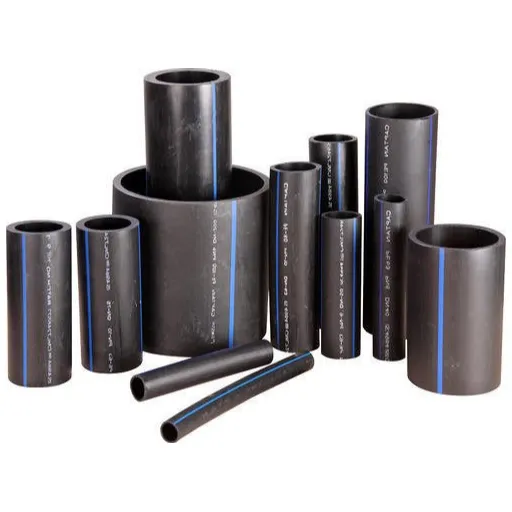
Applications in Water Supply
Since PE pipes are durable, flexible, and resistant to corrosion or chemical attack, polyethylene pipes find use in water supply systems. This explains the value so much since the working life of water applications depends heavily on efficient water management. The five major applications of PE plastic pipe in water supply systems are as follows:
- Potable Water Distribution System: These pipes are normally employed in the distribution of drinking water as they do not contaminate the water and maintain its quality along the way. Their smooth interior surface results in lower friction losses and prevents contaminants from adhering.
- Irrigation Systems: PE pipes irrigate fields in agricultural irrigation in an economical way. These tubes, under high UV radiation, resist the chemical action of fertilizers and can be exposed for a long period under different environmental conditions.
- Municipal Water Supply Networks: Municipal water supply systems routinely employ these pipes in the conveyance of water from treatment plants to residential and commercial areas. Their flexibility can help reduce leaks resulting from ground movement or pressure changes, thus enhancing the general integrity of the system.
- Industrial Water Supply: PE pipes are employed in industries for the conveyance of water used in cooling, cleaning, and manufacturing processes. Their chemical resistance in a harsh industrial environment increases their longevity and considerably reduces maintenance costs over time.
- Desalination Plants: PE pipes are at the heart of desalination plants, where seawater is treated to provide potable water. Resistance to saline ambiences with very high pressure will help them take water through the levels of the desalination process.
All of these applications delineate the versatility and performance of PE plastic pipes, which have today made them a lucrative choice in cleansing modern-day water supply infrastructure.
PE in Gas Pipe Systems
Polyethylene pipes are a considerable component of modern gas distribution lines due to certain characteristics of PE pipes and the advanced manufacturing standards that apply to them. Flexibility, corrosion resistance, and durability are the common characteristics of these pipes, suitable for transporting natural gas and propane under diverse environmental conditions. PE pipes have been manufactured for pressures as high as 10 bars (depending on grade and size) in order to sustain and guarantee the safety and reliability of these pipes for hazards of both high-pressure and low-pressure distribution.
Steel and cast iron are examples of traditional materials. A low risk of leaks genuinely occurs in PE pipe due to the pipe`s ability to accommodate ground movements without compromising its structural integrity. And they maintain resistance to chemical degradation, which ensures a life expectancy of around 50 years or more, given that satisfactory installation and maintenance are observed. Thus, the joining techniques in the greater sense, i.e., butt fusion or electrofusion, do form a seamless connection, ensuring the integrity of the system and the finishing of the structures within the fastest time possible.
Recent studies have revealed that the use of PE gas pipes has led to cost savings of up to 30% in installation projects, primarily due to lightweight and simplified handling requirements. Also, the use of PE pipes fits sustainability initiatives in the modern era, as they can be recycled and energy-efficient during production. Thus, we can see that these characteristics further incline the utility companies in favor of PE pipes in their attempts to modernize infrastructure while satisfying stringent safety and environmental regulations.
Drainage Solutions Using PE Pipes
Drainage use of polyethylene (PE) pipes is favored nowadays because of their superiority in durability, flexibility, corrosion resistance, and other factors. Chemical resistance in these pipes is another attribute embraced by handling aggressive wastewater and industrial effluents. Also, PE pipes exhibit somewhat above-average impact strength to ensure operations remain uninterrupted during exposure to heavy external loads or temperature changes; hence, they find applications in surface/subsurface drainage systems.
With the smooth internal surfaces of the pipes preventing friction and deposition of sediments, modern PE drainage solutions operate hydraulically better, achieving more efficient flow and comparatively lesser operational maintenance. Furthermore, through savvy joining techniques such as electrofusion and butt fusion welding, seamless joints without leakage are guaranteed for years of service.
Consequently, it seems that the industry data lately emphasizes the growing adoption of PE pipes in big drainage networks, describing how cost-effectiveness and installation ease have become primary factors. For instance, being lightweight makes these pipes easy to transport and handle; because of this, there is a saving of about 25%-30% on labor costs and installation time compared to traditional materials. PE pipes are thus a complete and sustainable solution to modern drainage problems, considering their more than fifty-year service life.
Case Studies and Real-world Applications
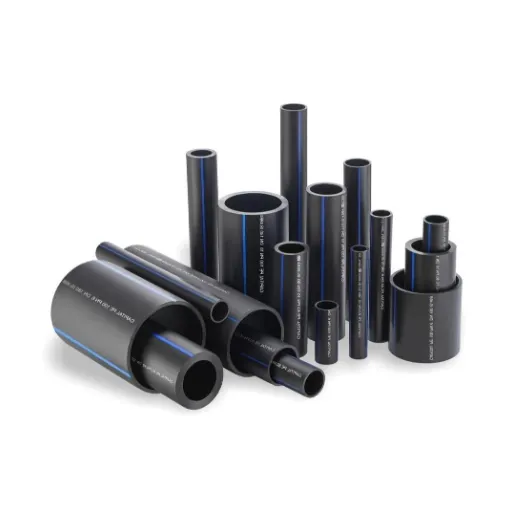
Success Stories of PE Pipe Implementations
Enhancing Urban Drainage Systems in Europe
A major metropolitan city in Europe revitalized an ancient stormwater drainage system with polyethylene (PE) pipe. Before renovation, flooding was a common occurrence during heavy showers due to decayed infrastructure and a lack of capacity. With the introduction of HDPE pipes instead of concrete and steel, the city saw that the flow efficiency of 40% improved. Alongside this, the lightweight nature of HDPE pipe and its flexibility reduced installation times by nearly thirty percent, while corrosion resistance stood in the way of any long-term maintenance costs. Hence, flooding incidents were kept at bay, and sustainable water management was realized.
Expanding Agricultural Irrigation Networks in the Middle East
In a large agriculture project in a semi-arid region of the Middle East, PE pipes were successfully employed for irrigation. With challenges ranging from water scarcity to the necessity of precise water distribution, engineers opted for PE pipes given their high durability and excellent resistance to external stresses from the environment. Nearly 25% improvements in water distribution efficiency and about 50 years of service life had been estimated to ensure long-term operational reliability from the series of outcomes. It further successfully demonstrated what PE pipes are capable of doing to increase agricultural production in regions suffering from water stress.
Robust PE Solutions against Coastal Erosion
A coastal development project in Southeast Asia used PE pipes as part of a shoreline protection strategy. PE pipe systems were being utilized to build outfalls where stormwater might be discharged in order to prevent erosion in the area. The PE pipe systems reduced the environmental impact by eliminating leachate contamination from the rivers while serving as a cheap alternative to other materials such as concrete. Their flexibility allowed some ground movement caused by tidal forces to be absorbed while ensuring stability over decades. Local environmental reports commented on a tangible increase in coastal preservation attributable to the implementation.
These case studies demonstrate the diverse applications and technical benefits of PE piping in different sectors. These adaptations, sustainability, and performance under difficult conditions continue to make them the green choice for application in the 21st-century environment.
Challenges Faced with Alternative Pipe Systems
In less demanding applications, one realizes that alternative types of pipes, made of classic materials such as steel, concrete, or PVC, often face major difficulties. Steel pipe, for instance, is mostly susceptible to corrosion when exposed to moisture, chemical substances, or a certain level of pH, which would compromise its structural integrity and preparation for maintenance or replacement at a very high cost. Conversely, concrete pipes, while most durable, usually tend to crack due to thermal expansion, freeze-thaw cycles, or heavy loads, and water leakage starts happening due to such cracking and thus affecting efficiency in operation.
Such alternative systems are incapable of adjusting to changing ground conditions or a minor seismic force, where the systems require flexibility to retain functionality. Also, with respect to the mounting or installation, we may think of expenses, depending on the cast iron or concrete. It seems hazardous when comparing them with more lightweight, modular pipe systems such as polyethylene (PE) ones. Slowly, environmental concerns are exerting further pressure on the long-term sustainability options that the traditional systems offer; production processes considered carbon-intensive and very little recyclability often ensure that compliance with sustainability standards just cannot enter the picture in a modern project.
When considering life cycle costs, environmental impact, and operational resilience, these challenges further mitigate the use of conventional piping solutions in a modern infrastructure and underscore the importance of transitioning to advanced alternatives such as PE pipes.
Lessons Learned from Pipe Material Choices
Compared to my experience, one of the greatest lessons I can say about the pipe material choices is about aligning the material properties with both the requirements of a project and sustainability goals. Materials of the traditional kind ago by lots of trusted and confident, yet are requently incompatible with modern performance and environmental standards. For instance, corrosion problems, too much weight, and an unconservative manufacturing process result in higher operating costs and environmental issues into the lapse of time. Restoration of these issues gave rise to the importance of alternative materials such as PE pipes for durability, low maintenance, and environmental friendliness.
Another key point to consider is that all aspects of materials cost throughout the life cycle need to be evaluated, rather than considering just design expenses alone. Conventional options, albeit supposedly cheaper, mostly possess short operational lives and, hence, require a larger percentage of installations and/or maintenance costs; failures such as leaks constitute some sizeable inkling of these costs. PE-pipe advanced materials provide resilient infrastructure at a fairly reasonable expense, aided by the fact that they withstand wear and tear, harsh chemical exposures, and physical abuse well. This inclusive way of considering cost has proven to be the most lucrative approach when optimizing project results.
There finally comes a time when it really hits you that it is necessary to grasp the adaptability and flexibility of materials in the face of an evolving project requirement. Infrastructure today must offer the means to confront any environmental upsets or contingencies. PE pipes are good in terms of adaptability, for example, tolerating severe temperatures or dynamic loading conditions-the resistance will intrinsically add value to the operational stage of the project.
Frequently Asked Questions (FAQ)
Q: What are the major differences between PE plastic pipe and other pipe systems?
A: The differences between PE plastic pipe and other pipe systems are the composition of materials, flexibility, and installation methods. PE pipes, commonly called polyethylene pipes, are very strong and durable and are used for many functions, including water lines. Different materials, such as PVC or PE, offer electrical and mechanical properties different from PE, and they might be less flexible and hence not suitable for trenchless installation.
Q: How do PE and HDPE pipes differ?
A: PE pipes and HDPE pipes are both types of polyethylene pipes, differing in their density. HDPE stands for high-density polyethylene, and so it has a higher density than regular PE. Hence, it has higher strength and better performance characteristics in hardcore applications. HDPE pipes are preferably laid for water supply lines and for irrigation purposes, due to their leak-proof nature and stress-cracking resistance against the environment.
Q: What are the benefits garnered by using PE plastic pipe systems?
A: Embracing PE plastic pipe systems assures the benefits of exhibiting flexibility against nature, resisting corrosion, and joining through heat fusion, thereby reducing fittings and enhancing the simplicity of installation. Moreover, PE pipes have the advantage of cheap pricing while their mechanical properties fit them for cold water applications as well as other usages in plumbing.
Q: Where will the best applications for PE and HDPE pipes lie?
A: PE and HDPE pipes have been employed in water supply, irrigation, and sewer systems. Their strength and durability facilitate agricultural applications, while their flexibility permits installation through trenchless methods. They can also transport a large variety of fluids, which may include potable water or wastewater.
Q: Are PE pipes more environmentally friendly than other pipe materials?
A: Yes, PE pipes are said to be more environmentally friendly when compared to some other pipes, such as PVC. They can be recycled, with less environmental damage caused during the production process. Plus, the system is built to be leak-free, which eliminates water losses, thus making it an even more sustainable solution for water supply lines.
Q: Can PE pipes be used for hot and cold water applications?
A: Generally, PE pipes can be used for cold water applications. They can also be designed for hot water systems up to certain temperatures. For higher temperature applications, PEX or HDPE might offer better thermal resistance and mechanical properties.
Q: What installation methods are used for PE plastic pipes?
A: PE plastic pipes can be installed using various methods, such as the conventional method of trenching or with trenchless methods. The trenchless method, like pipe bursting, installs the new pipe without extensive excavation, thereby minimizing disruption. The PE pipes may also be joined through heat fusion, which creates a strong and durable connection.
Q: Explain the mechanical properties of PE and how they are compared to those of other pipe materials.
A: The mechanical properties of PE pipes include high tensile strength, flexibility, and impact resistance. They are thus strong and flexible enough-and this makes them appropriate for a wide range of operations-compared to other pipe materials such as PVC or PEX. Their resistance to environmental stresses is also a factor in their long service life.
Q: What are some disadvantages of using PE plastic pipe systems?
A: Some disadvantages faced by PE plastic pipe systems may include causing UV inside degradation if not protected and also limiting the appearance of temperature. Some people can also find that PE pipes have more installations, such as heat fusion, that plumbers may not be as familiar with concerning traditional materials.
References
- Structural performance of plastic pipe used for landfill leachate collection.
OhioLINK Electronic Theses and Dissertations Center
The topic of discussion here lies in the realm of structural performance comparison of PE and PVC pipes in landfill applications. - Evaluation and Development of a Structurally Enhanced PVC Water Pipe
University of Texas at Arlington – Civil Engineering Dissertations
The improvement of PVC pipe materials and applications is the subject of this dissertation. - Plastic pipe failure, risk, and threat analysis
National Transportation Library – U.S. Department of Transportation
This report analyzes the performance and risk of plastic PE gas pipes in several different regions.



